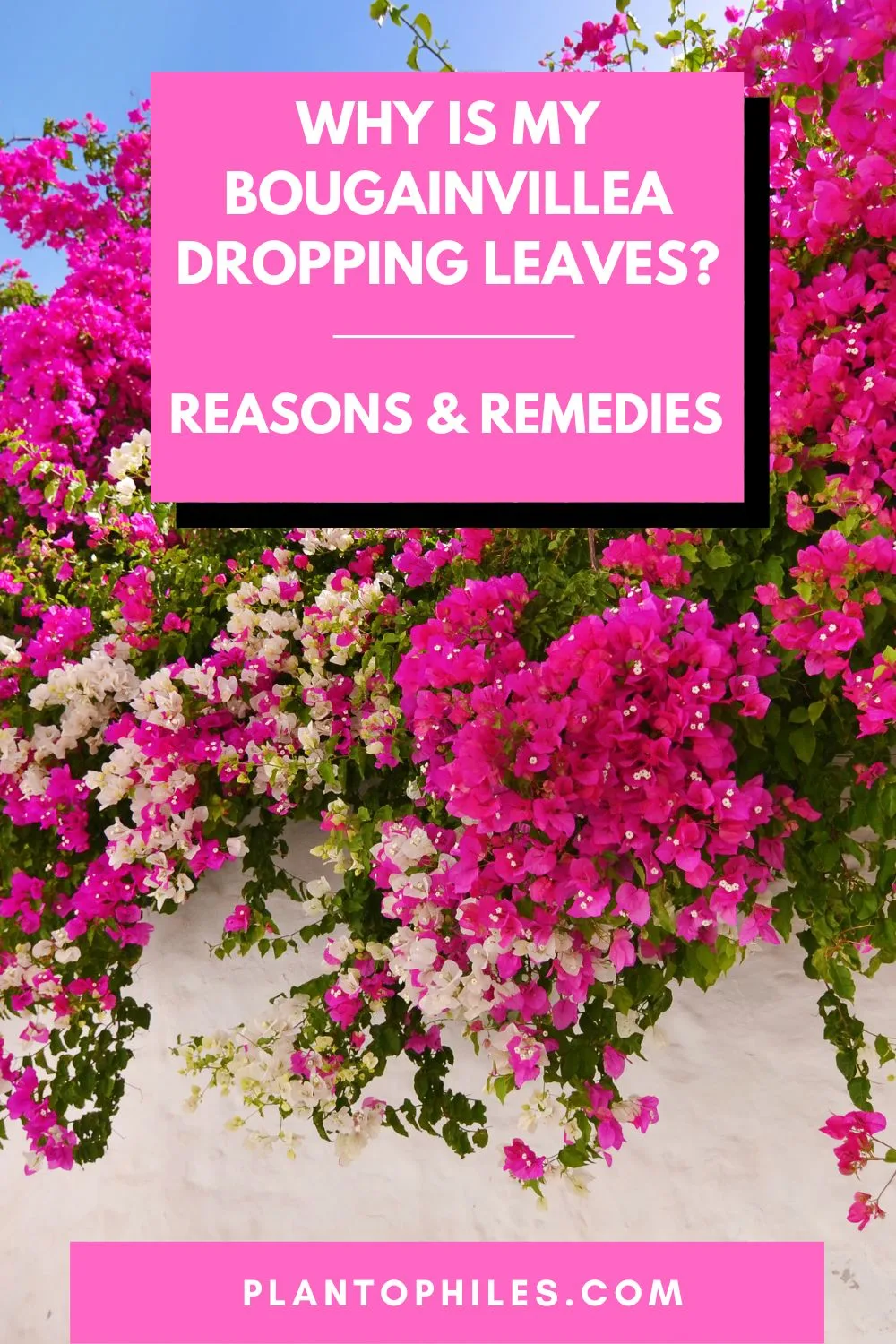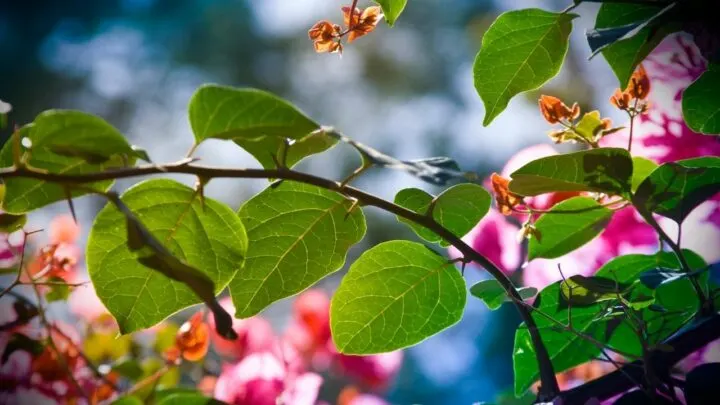Over recent years, bougainvillea has become more popular than ever, especially in places where droughts are common, such as California or Arizona.
Their newfound popularity largely comes from being so low maintenance, often making them perfect for those who want a brightly colored garden but struggle to remember to water their plants!
You may be wondering if bougainvilleas are so easy to care for, then why has mine started dropping its leaves?
Read on to find out what could be the matter with your plant.
Table of Contents
Bougainvillea dropping leaves
Bougainvillea dropping leaves is generally attributed to one of the following problems: change in climate, overwatering, plant shock, insufficient light, or pests such as aphids. All these factors can impact the plant’s health and vitality and can lead to leaf drop in Bougainvillea.
Change in climate
If summer has come to an end and the colder seasons are approaching, a change in climate could be an explanation for why your bougainvillea is dropping leaves.
During the fall and winter seasons, bougainvillea enters a period of dormancy.
This is the process that most perennial plants go through and is where the plants prepare to conserve energy to protect themselves from the colder temperatures and lack of direct sunlight that is approaching.
Bougainvilleas do not grow during dormancy, and any remaining leaves will wilt and die.
Bougainvillea shouldn’t be exposed to temperatures under 41 degrees Fahrenheit as it is likely that they will experience damage and maybe even death in climates lower than this.
They usually enter dormancy at anything under 50 degrees, but it isn’t something to worry about. Your plant should grow again once the days get warmer and longer.
Top tip – A way to tell if your plant is dormant is to gently bend the stems. If you can bend the branch, that means that the plant is still alive and probably dormant.
If they feel brittle and dry and can easily be snapped, your plant is likely dead.

Overwatering
Many gardeners make the mistake of treating bougainvilleas just like any other summer-blooming plant.
Usually, if the leaves on a plant begin to wilt or drop, the first solution that most would think of is to give it some extra water.
However, this is certainly not the answer in the case of bougainvillea. These plants are very drought-resistant and thrive best under barely any maintenance.
It is often the case that their leaves are actually dropping due to being watered much too frequently.
They should only be watered every fortnight and even less if it has recently rained or you live in a high rainfall environment.
These plants don’t like to be moist, so the soil should completely dry before watering again.
You can test whether your bougainvillea is being overwatered with a simple touch test.
Wait around five days after watering and then touch the soil. If you find that the soil is moist or wet, then you should definitely adjust your watering schedule.
Be sure to use a pot with draining holes and not to place any sort of tray or saucer under it, so that the water isn’t being trapped into the soil.
Consistent overwatering can lead to the fungal disease root rot, which can be fatal for bougainvillea.
Plant shock
Plant shock is a state of trauma that plants go through after having their habitats or climates abruptly changed.
If your bougainvillea has recently been transplanted to a new location or been moved to a cooler environment, then it is very likely that your plant is in shock.
This isn’t necessarily fatal for bougainvillea and, in most cases, can be reversed.
Ensure that the area you have moved your plant into isn’t under 50 degrees Fahrenheit (10 degrees Celsius), and ensure that the plant is getting lots of direct sunlight.
A bougainvillea needs at least 6 hours of direct sunlight a day to be fully healthy and thriving.
It may take up to 3 months for your bougainvillea’s leaves and new growth to return after being affected by plant shock.
All it takes is direct sunlight and occasional watering to return to its original health.
Pests
Although rare, aphid infestation is the most common form of the disease in bougainvillea.
Aphids are small bugs that can barely be seen with the naked eye and will eat away at your plant’s leaves.
Aphid-infested leaves will become off-colored and start to wilt and drop over time.
Examine the stems and leaves for signs of insect sightings. This can be treated quite easily if caught early enough.
The insects can be removed by hand or gently spraying the plant with water.
There are also professional plant treatments that can be purchased for tackling aphids.
Frequently Asked Questions about Bougainvilleas Dropping Leaves
Do bougainvilleas need to be fertilised?
Bougainvilleas can be fertilized every 4-6 weeks during the spring and summer months using a tablespoon of standard hibiscus fertilizer. Bougainvilleas do not need to be fertilized during the winter and fall months.
What is the lifespan of a bougainvillea?
It is common for a bougainvillea to still be alive and blooming when it’s over 10 years old. They can last decades if maintained and cared for properly.
When does a bougainvillea bloom?
Bougainvillea blooms between early summer and early fall.

Daniel has been a plant enthusiast for over 20 years. He owns hundreds of houseplants and prepares for the chili growing seasons yearly with great anticipation. His favorite plants are plant species in the Araceae family, such as Monstera, Philodendron, and Anthurium. He also loves gardening and is growing hot peppers, tomatoes, and many more vegetables.


